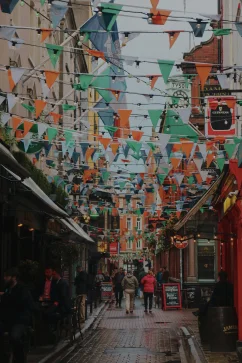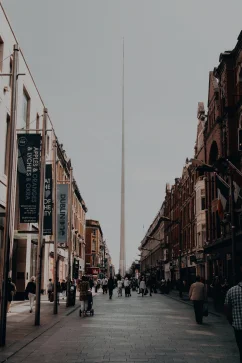Museums in Rome: A Treasure Trove of Art and History
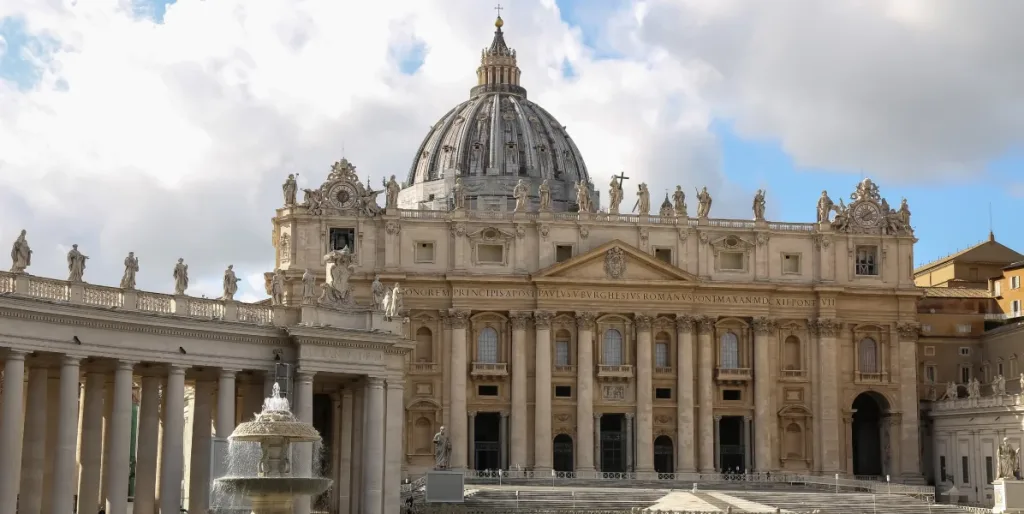
Rome, often referred to as the “Eternal City,” is not only renowned for its rich history and ancient monuments but also for its extraordinary museums. From the Vatican Museums housing priceless religious art to the Capitoline Museums showcasing Rome’s ancient past, these cultural institutions offer a deep dive into the art, history, and heritage of one of the world’s most iconic cities. In this article, we’ll explore some of the most notable museums in Rome.
The Vatican Museums
The Vatican Museums trace their origins to Pope Julius II, who purchased a collection of sculptures in 1506. Over the centuries, subsequent popes expanded the collection, and the museums were officially established by Pope Clement XIV in 1771. Since then, they have continued to grow and evolve.
Collections
The Vatican Museums boast an unparalleled collection of art and historical artifacts, spanning from ancient times to the modern era. Some of the most notable collections include:
Classical Antiquities: This collection features sculptures, pottery, and other artifacts from ancient Greece and Rome. The most famous piece is the Laocoön and His Sons sculpture.
Raphael Rooms: These are a series of four rooms painted by the renowned artist Raphael and his workshop. The Stanze di Raffaello are considered some of the most significant masterpieces of Renaissance art.
Sistine Chapel: The Sistine Chapel is perhaps the most famous part of the Vatican Museums, known for Michelangelo’s stunning ceiling frescoes, including the iconic “Creation of Adam.”
Gallery of Maps: This gallery houses a series of maps depicting Italy and its regions, created in the 16th century. The intricate details and artistic quality of the maps are truly impressive.
Vatican Pinacoteca: This is the Vatican’s art gallery, featuring an exceptional collection of paintings, including works by Caravaggio, Raphael, Leonardo da Vinci, and many others.
Ethnological Museum: This museum showcases a diverse array of artifacts from cultures around the world, providing insights into the history of human societies.
Christian Museum: The Christian Museum houses a vast collection of Christian art and relics, including early Christian sarcophagi and medieval religious objects.
Egyptian Museum: Home to a remarkable collection of Egyptian artifacts, including mummies, statues, and hieroglyphics.
Visiting the Vatican Museums
Visitors to the Vatican Museums should plan for a full day to explore the vast collection thoroughly. It’s advisable to purchase tickets in advance to skip the long lines. The museums can get crowded, so arriving early or visiting during the off-peak season is recommended for a more enjoyable experience.
The museums are typically open Monday through Saturday, with some exceptions for holidays and special events. Proper attire is required, with shoulders and knees covered, as it is a place of religious significance.
Location
The Vatican Museums are located within Vatican City, an independent city-state enclaved within Rome, Italy. Vatican City is situated in the heart of Rome, just a short distance from the city’s historic center.
The specific address for the Vatican Museums is: Viale Vaticano, 00165 Rome, Italy
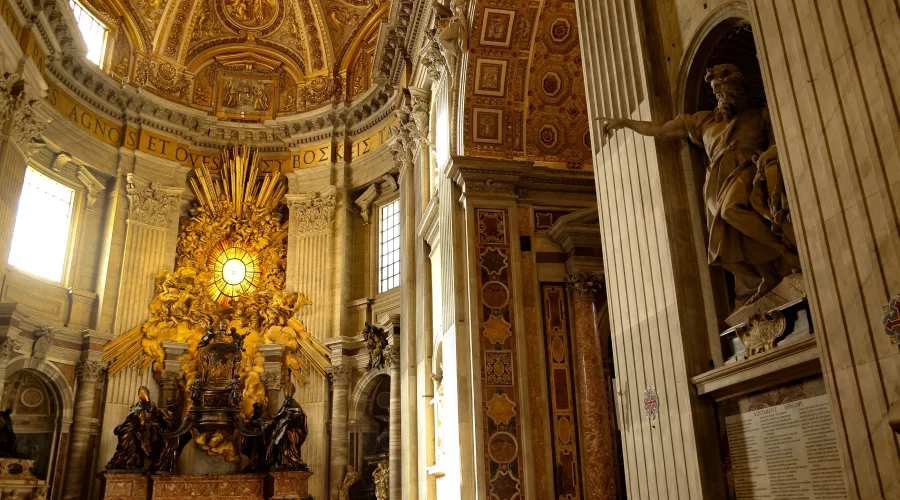
The Capitoline Museums
The Capitoline Museums are spread across three palaces: Palazzo dei Conservatori, Palazzo Nuovo, and Palazzo Caffarelli. The museums’ origins can be traced to the donation of a collection of ancient bronzes by Pope Sixtus IV in 1471. Subsequently, the Capitoline Hill was chosen as the ideal location for the museums. Renaissance architect Michelangelo Buonarroti played a pivotal role in designing the Piazza del Campidoglio, which serves as the museums’ grand entrance.
Collections
The museums house a diverse and impressive array of art and artifacts, including:
Classical Sculpture: One of the highlights of the Capitoline Museums is its collection of classical sculptures. The Capitoline Wolf, a bronze statue depicting the legendary she-wolf nurturing Romulus and Remus, is an iconic symbol of Rome. Other notable sculptures include the Dying Gaul and the Capitoline Venus.
Renaissance Art: The museums also boast a rich collection of Renaissance art, featuring works by masters like Caravaggio, Titian, and Veronese. The Hall of the Horatii and Curiatii houses one of Caravaggio’s masterpieces, “The Fortune Teller.”
Ancient Artifacts: Visitors can explore an array of ancient artifacts, including inscriptions, mosaics, and jewelry, offering insights into daily life and culture during the Roman Empire.
Palazzo Caffarelli: This section of the museums houses temporary exhibitions and offers breathtaking views of the Roman Forum and Palatine Hill.
Piazza del Campidoglio
The Piazza del Campidoglio, designed by Michelangelo, serves as the museums’ elegant entrance square. It features the famous equestrian statue of Emperor Marcus Aurelius at its center and is surrounded by a harmonious arrangement of historic buildings.
Visiting the Capitoline Museums
To fully appreciate the treasures within the Capitoline Museums, visitors should allocate several hours for exploration. The museums are open daily, except for holidays, and offer a serene escape from the hustle and bustle of Rome’s streets.
Location
The Capitoline Museums (Musei Capitolini) are located atop the Capitoline Hill (Campidoglio) in the heart of Rome, Italy. The address for the Capitoline Museums is: Piazza del Campidoglio, 1 00186 Rome, Italy
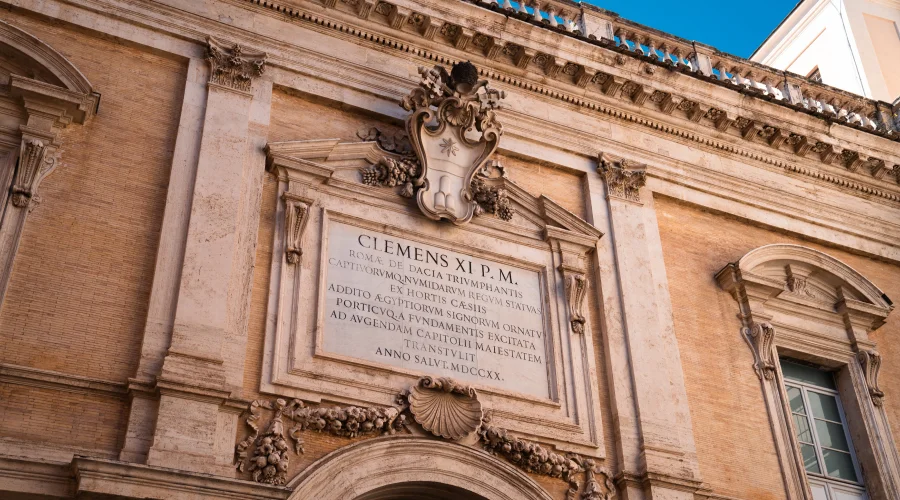
The Borghese Gallery
Nestled within the lush confines of the Villa Borghese gardens in Rome, the Borghese Gallery (Galleria Borghese) stands as a testament to the opulence and artistic fervor of the Baroque era. This exquisite museum is renowned for its outstanding collection of art and sculpture, featuring works by some of the most celebrated artists of the period. A visit to the Borghese Gallery offers a captivating journey through the Baroque movement’s grandeur and beauty.
History and Architecture
The Borghese Gallery is housed within the Villa Borghese Pinciana, a splendid 17th-century villa designed by the architect Flaminio Ponzio. It was commissioned by Cardinal Scipione Borghese, a nephew of Pope Paul V, who was an avid art collector. The cardinal’s passion for art led to the creation of this villa, which was intended to serve as a showcase for his impressive art collection.
Collections
The Borghese Gallery is renowned for its exceptional collections, which encompass a wide range of artistic genres, including:
Sculpture: The gallery boasts an impressive array of sculptures, many by the renowned sculptor Gian Lorenzo Bernini. Visitors can admire masterpieces like “Apollo and Daphne,” “David,” and “The Rape of Proserpina.” Bernini’s sculptures are notable for their dynamic and lifelike qualities.
Paintings: The Borghese Gallery features an extensive collection of paintings, including works by Caravaggio, Titian, Raphael, and Rubens. Caravaggio’s “Boy with a Basket of Fruit” and “David with the Head of Goliath” are among the highlights.
Ancient Art: In addition to Baroque art, the gallery houses an impressive collection of ancient Roman sculptures, mosaics, and artifacts. These artifacts provide a glimpse into the artistic and cultural heritage of ancient Rome.
Furniture and Decorative Arts: The villa’s interior is lavishly decorated with period-appropriate furniture, tapestries, and decorative arts, enhancing the overall Baroque ambiance.
Visiting the Borghese Gallery
To fully appreciate the treasures within the Borghese Gallery, it’s advisable to plan your visit in advance, as the museum limits the number of visitors allowed at any given time to preserve the artworks and maintain a serene atmosphere. Visitors are typically allowed a two-hour time slot to explore the museum. Tickets must be purchased in advance, and it’s recommended to book them online or through authorized ticket sellers. The gallery can get crowded, so booking ahead ensures you secure your desired time slot.
Location
The Borghese Gallery (Galleria Borghese) is located in Rome, Italy, within the beautiful Villa Borghese gardens. Here is the specific address: Piazzale del Museo Borghese, 5 00197 Rome, Italy
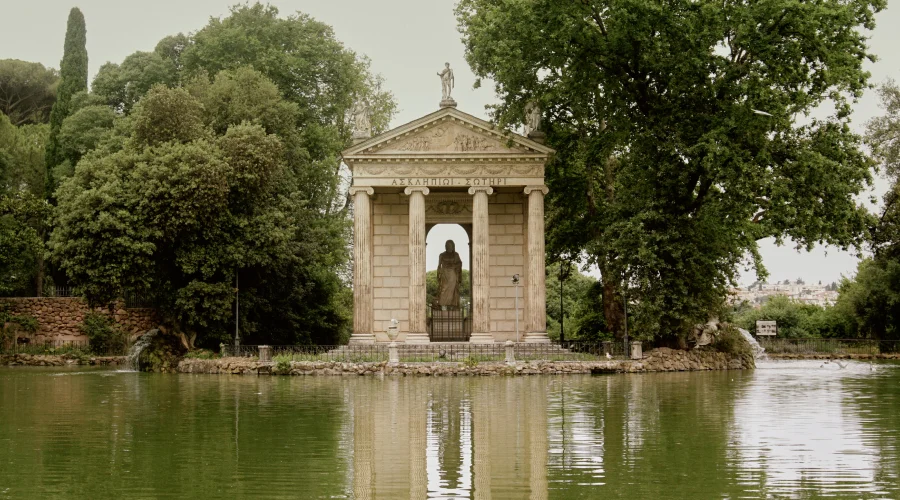
The National Roman Museum
Nestled in the heart of the Eternal City, The National Roman Museum (Museo Nazionale Romano) is a group of four museums that collectively serve as a gateway to the unparalleled archaeological heritage of Rome. With a rich and varied collection of artifacts from ancient Rome, this museum network offers a compelling journey through time, providing insight into the life, culture, and achievements of the Roman Empire.
History and Overview
The Museo Nazionale Romano is not a single museum but rather a network of four museums located at different sites across Rome. These museums are:
Palazzo Massimo alle Terme: Located near Rome’s Termini train station, this museum houses an extensive collection of sculptures, frescoes, mosaics, and other artifacts from ancient Rome. Highlights include the “Boxer at Rest” sculpture and the exquisite frescoes from the Villa of Livia.
Palazzo Altemps: Housed within a Renaissance palace, this museum focuses on Roman sculpture, including notable pieces like the Ludovisi Throne and the Boncompagni-Ludovisi Collection.
Baths of Diocletian (Terme di Diocleziano): This museum is situated within the ancient Baths of Diocletian, one of Rome’s largest bath complexes. It features a diverse range of sculptures, inscriptions, and architectural elements.
Crypta Balbi: The Crypta Balbi Museum provides an intriguing perspective on the layers of history in Rome. It showcases the evolution of a Roman neighborhood through archaeological excavations and multimedia exhibits.
Collections
The Museo Nazionale Romano’s collections are vast and encompass a wide range of artifacts, including:
Sculptures: The museums display numerous sculptures, from classical Greek-inspired works to portraits of Roman emperors and mythological figures.
Mosaics: Visitors can marvel at intricate floor mosaics that adorned Roman villas and public spaces, depicting scenes of daily life, mythology, and grand architectural designs.
Frescoes: Richly decorated frescoes are on display, offering a glimpse into the artistry and decorative tastes of ancient Romans.
Jewelry and Everyday Objects: These museums house an array of jewelry, pottery, and everyday items that shed light on daily life in ancient Rome.
Numismatics: Coins and currency from various periods of Roman history are exhibited, illustrating the economic and political changes over the centuries.
Visiting the Museo Nazionale Romano
To explore the Museo Nazionale Romano fully, it’s advisable to allocate ample time, as each museum within the network has its unique collection and ambiance. Tickets can be purchased individually for each site or as a combined ticket, granting access to all four museums. Guided tours are also available for those seeking a more in-depth understanding of the artifacts and their historical context.
Location
The Museo Nazionale Romano, or the National Roman Museum, is not located at a single site but is a network of museums spread across various locations in Rome. Here are the addresses of the four main sites within the Museo Nazionale Romano network:
Palazzo Massimo alle Terme: Largo di Villa Peretti, 1, 00185 Rome, Italy
Palazzo Altemps: Piazza di Sant’Apollinare, 44, 00186 Rome, Italy
Baths of Diocletian: Viale Enrico De Nicola, 78, 00185 Rome, Italy
Crypta Balbi: Via delle Botteghe Oscure, 31, 00186 Rome, Italy.
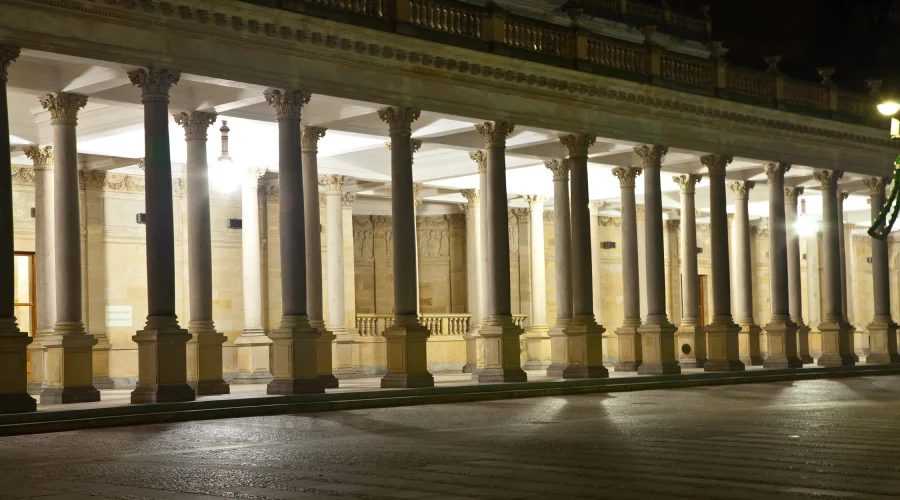
The Galleria Doria Pamphilj
Nestled in the heart of Rome, the Galleria Doria Pamphilj is a hidden gem among the city’s many renowned art galleries and museums. This privately-owned gallery offers an intimate and immersive experience, providing visitors with a unique opportunity to explore a world-class collection of European art within the opulent setting of a historic Roman palace.
History and Overview
The Galleria Doria Pamphilj is part of the Palazzo Doria Pamphilj, a grand palace that has been the home of the Doria Pamphilj family for centuries. The palace was originally built in the 16th century and has undergone expansions and renovations over the years. Today, it stands as a testament to the family’s enduring legacy and their commitment to preserving their remarkable art collection.
The Collection
The gallery’s collection encompasses a diverse range of European art, including paintings, sculptures, decorative arts, and more. Highlights of the collection include:
Paintings: The Galleria Doria Pamphilj houses an outstanding collection of Italian and European paintings from various periods. Visitors can admire works by renowned artists such as Velázquez, Titian, Raphael, Caravaggio, Bernini, and Jan Brueghel the Elder. “Portrait of Pope Innocent X” by Velázquez and “Rest on the Flight into Egypt” by Caravaggio are among the iconic masterpieces on display.
Sculptures: The gallery also features a remarkable selection of sculptures, including pieces by Gian Lorenzo Bernini and Alessandro Algardi. These sculptures provide a glimpse into the Baroque era’s sculptural brilliance.
Decorative Arts: The palace’s lavish interiors are adorned with period-appropriate furniture, tapestries, and decorative arts that enhance the overall ambiance of the gallery.
The Palace: Beyond its impressive art collection, the Palazzo Doria Pamphilj itself is a work of art. Visitors can explore the palace’s opulent rooms, which have been meticulously preserved and provide a glimpse into the lifestyle of Roman aristocracy over the centuries. The palace’s grandeur and historical significance are an integral part of the museum experience.
Visiting the Galleria Doria Pamphilj
The Galleria Doria Pamphilj offers a more intimate and less crowded experience compared to some of Rome’s larger museums. Visitors are encouraged to take their time and savor the artworks and the palace’s exquisite architecture. Guided tours are available for those who wish to gain deeper insights into the collection and its history.
Location
The Galleria Doria Pamphilj is located in the heart of Rome, Italy, near the famous Piazza Venezia. Here is the specific address: Via del Corso, 305 00186 Rome, Italy.
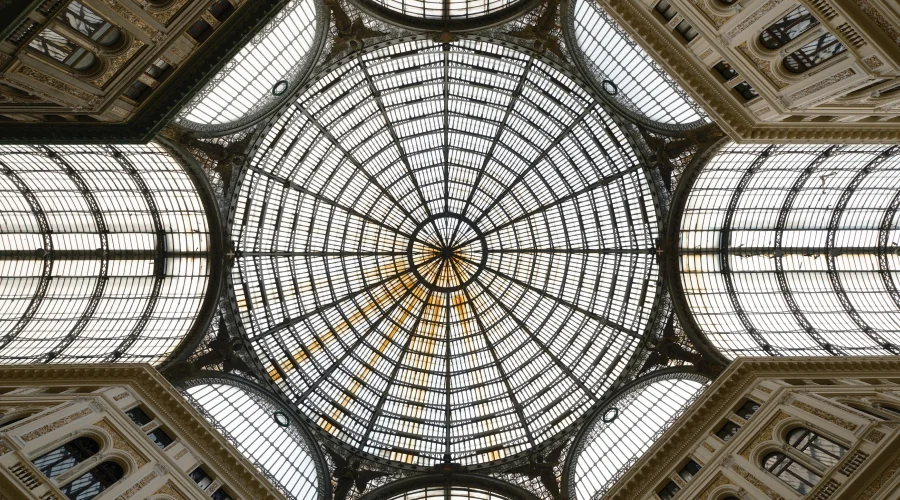
The MAXXI – National Museum of 21st Century Arts
Situated in the heart of Rome’s Flaminio district, The MAXXI – National Museum of 21st Century Arts, or simply MAXXI, stands as a testament to the city’s commitment to contemporary art and architecture. Designed by the renowned architect Zaha Hadid, this cutting-edge museum is a striking example of modern architecture and a vibrant hub for artistic innovation.
History and Architecture
MAXXI was inaugurated in 2010 and was Italy’s first national museum dedicated to contemporary art and architecture. Its unique and futuristic building was designed by the late Zaha Hadid, a Pritzker Prize-winning architect known for her bold and innovative designs. The museum’s architecture, characterized by fluid lines, sharp angles, and a sense of movement, is a work of art in itself. It challenges conventional notions of space and invites visitors to explore its dynamic interior.
Collections
MAXXI’s mission is to explore and showcase art and architecture from the 21st century. The museum’s collections and exhibitions are diverse and include:
Contemporary Art: MAXXI hosts rotating exhibitions of contemporary artworks, including paintings, sculptures, installations, and multimedia pieces. The focus is on emerging and established artists who are pushing the boundaries of artistic expression.
Architecture: Given its emphasis on architecture, MAXXI dedicates space to exploring architectural trends and innovations of the 21st century. Exhibitions often delve into urban planning, sustainability, and the evolving role of architecture in modern society.
Design: The museum also features design exhibitions that highlight the intersection of art and functionality in contemporary design. This includes furniture, fashion, and other design-related disciplines.
Multimedia and New Media Art: MAXXI embraces technology and multimedia art forms, showcasing digital art, video installations, and interactive exhibits that reflect the digital age.
Education and Programs
MAXXI is not only a place to view art; it’s also a space for learning and creativity. The museum offers a range of educational programs, workshops, and events designed to engage visitors of all ages and backgrounds. These programs aim to foster an understanding of contemporary art and architecture and inspire future generations of artists and thinkers.
Visiting MAXXI
When planning your visit to MAXXI, it’s essential to check the museum’s official website for information on current exhibitions, opening hours, and ticket prices. Guided tours and educational activities are often available and can enhance your experience.
MAXXI is easily accessible by public transportation, including buses and trams. It’s a relatively short walk from the Flaminio metro station (Line A) and is conveniently located near other cultural attractions, such as the Auditorium Parco della Musica.
Location
The MAXXI – National Museum of 21st Century Arts is located in Rome, Italy, specifically in the Flaminio district. Here is the specific address: Via Guido Reni, 4A 00196 Rome, Italy.
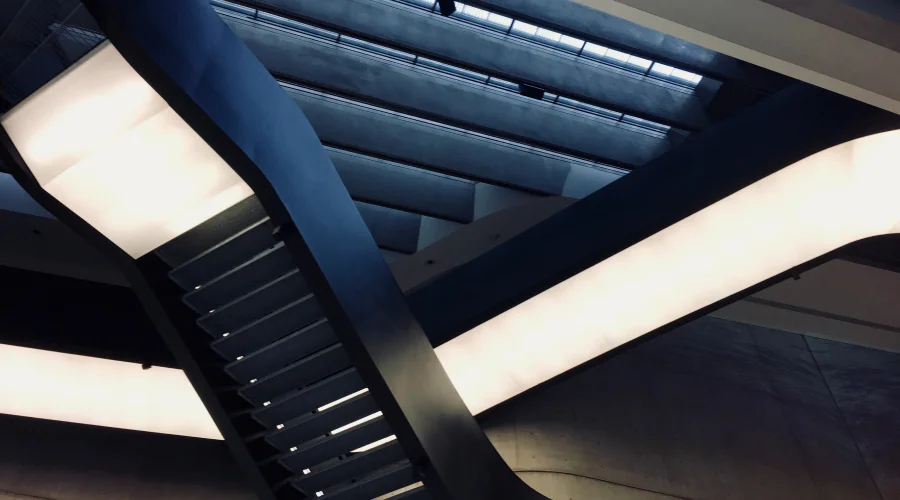
The Ara Pacis Museum
Nestled along the banks of the Tiber River in the heart of Rome, The Ara Pacis Museum (Museo dell’Ara Pacis) is a testament to both the ancient artistry of Rome and the concept of peace celebrated during the reign of Emperor Augustus. This modern museum, dedicated to preserving and showcasing the Ara Pacis Augustae, offers a unique glimpse into ancient Roman history and culture.
History and Significance
The Ara Pacis Augustae, or Altar of Augustan Peace, is an ancient Roman altar dating back to 9 B.C. It was commissioned by Emperor Augustus to commemorate the peace achieved after his successful military campaigns in Gaul and Spain. The altar is richly decorated with intricate reliefs and sculptures depicting various scenes, including processions, mythical figures, and family members of Augustus.
Architecture
The Ara Pacis Museum, designed by the renowned architect Richard Meier, is a modern architectural masterpiece in its own right. The museum’s structure is characterized by clean lines, white travertine marble, and a minimalist aesthetic that provides a striking contrast to the historic context of ancient Rome. The design allows natural light to filter into the museum, creating a serene and contemplative atmosphere for visitors.
Collections
The focal point of the Ara Pacis Museum is, of course, the Ara Pacis itself. The altar is displayed within a glass enclosure that protects it from the elements while allowing visitors to admire its intricate details up close. The altar is surrounded by informative displays and exhibits that provide historical context, shedding light on the reign of Emperor Augustus and the importance of the concept of peace in Roman society.
Exhibitions
In addition to the Ara Pacis, the museum hosts temporary exhibitions related to ancient Rome and its cultural heritage. These exhibitions may include artifacts, artworks, and archaeological finds from various periods, offering visitors a broader perspective on the history and art of Rome.
Visiting the Ara Pacis Museum
When planning a visit to the Ara Pacis Museum, it’s advisable to check the museum’s official website for up-to-date information on opening hours, ticket prices, and any special exhibitions or events. The museum is conveniently located in the historic center of Rome, making it easily accessible by foot or public transportation.
The Ara Pacis Museum is typically wheelchair accessible, and it offers guided tours and educational programs to enhance the visitor experience. It’s an excellent destination for both history enthusiasts and those interested in the art and culture of ancient Rome.
Location
The Ara Pacis Museum (Museo dell’Ara Pacis) is located in the heart of Rome, Italy. Here is the specific address: Lungotevere in Augusta 00186 Rome, Italy.
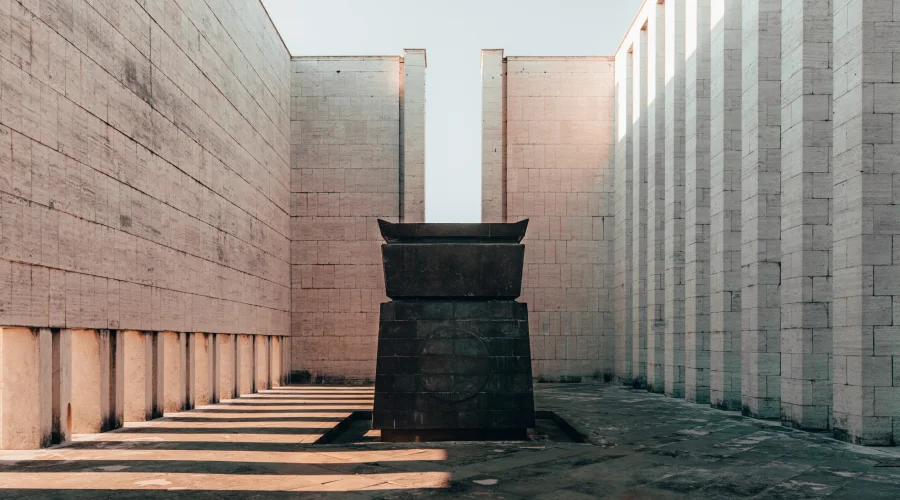
Conclusion
These museums, each with its own unique charm and historical significance, contribute to Rome’s reputation as a living museum of human civilization. Whether you’re captivated by ancient history, Renaissance art, or contemporary creativity, Rome’s museums offer an enriching and unforgettable cultural experience.







